Last-Minute NYC Holiday Gift Guide 🎁
We’ve created a holiday gift guide with presents for the intrepid New Yorker that should arrive just in time—


The lines to get to the top of the Empire State Building rank among New York’s legendary nightmares. But now, following a two-year project, guests will walk through a 10,000 square foot immersive new exhibit, called the Observatory Experience, instead of standing in line. Untapped Cities checked it all out in a preview yesterday.
The culmination of a $165 million transformation, the Observatory Experience allows visitors to the famed observatory on the 86th floor to will walk through a museum experience and take a journey into the history of the great skyscraper. To accommodate the new flow of visitors through the second floor before taking the elevator ride up, the general public entrance was moved last year to 20 W 34th Street.
 Photo by Evan Joseph courtesy Empire State Building
Photo by Evan Joseph courtesy Empire State Building
The museum is a gallery of multiple hands-on exhibitions that highlight the unique significance and history of the different parts of the famous building. The design of the Observatory Experience, completed through a collaboration of parties from multiple backgrounds in art, architecture, sound, graphics, and imaging, is inspired by the plans and designs of the original Empire State Building. Tom Hennes of Thinc Design, who worked on the experience, said that historical research was a major part of the process. “Every motif in the design comes from somewhere in the building. So, it’s authentic not only to Art Deco style but also to the building itself. And the different galleries take you through a story that leads from the inspiration of the building to the construction to its growing fame.”

\
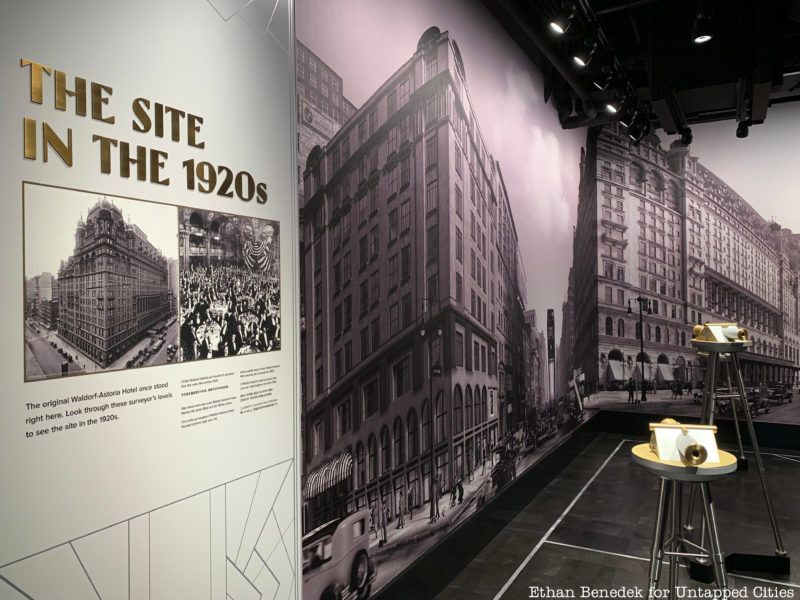
As visitors walk through the exhibit, they will have the opportunity to see back in time to the history of the skyscraper’s construction and the extraordinary construction process that made it unprecedented for its time. At the beginning, several telescopes mimic original survey markers, used to position the levels of construction. Looking into the lens of the markers, visitors can see short film clips of actors in historical dress reenacting day to day interactions that would have occurred on the street outside in the early days of the building’s construction.
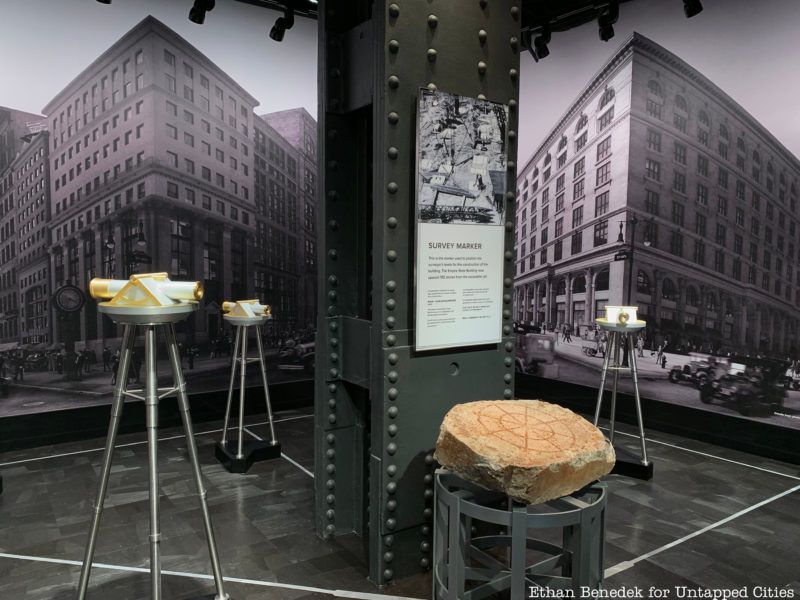

Photo by Evan Joseph courtesy Empire State Building
Michael Beneville, founder and CEO of Beneville Studios, the creative consultant firm that handled many aspects of the design, said that the initiative was highly focused on revolutionizing the experience of “lining up,” so that visiting the famous Observatory wouldn’t ever feel “like a cattle rail.” “Ultimately the entire journey from the ground floor to the 86th and back down will be an entirely new experience.” The team was committed to not disrupting the visitor experience. Beneville went on, “This entire process has happened without shutting down the line. So four million people have continued to come to the Empire State Building while this whole project was being built.”
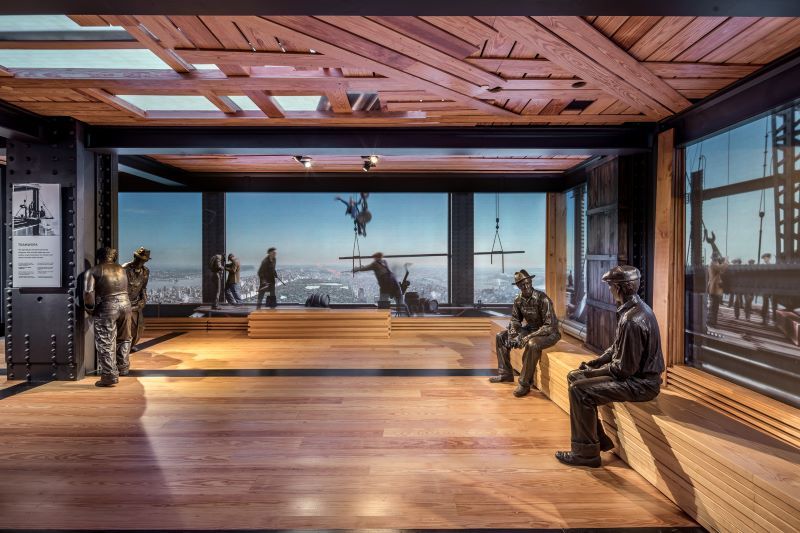
Photo by Evan Joseph courtesy Empire State Building

Photo by Evan Joseph courtesy Empire State Building
One of the high points of the experience is definitely the recreation of an original elevator, a design by Otis that was groundbreaking for its time. Visitors have the chance to step into a simulation of an elevator, where spatialized audio, jets of air, and a bass kicker under the floor give the sensation of whizzing vertically through an elevator shaft, as well as an optical illusion with a one way mirror on the floor, emulating the feeling of looking many floor down the shaft.
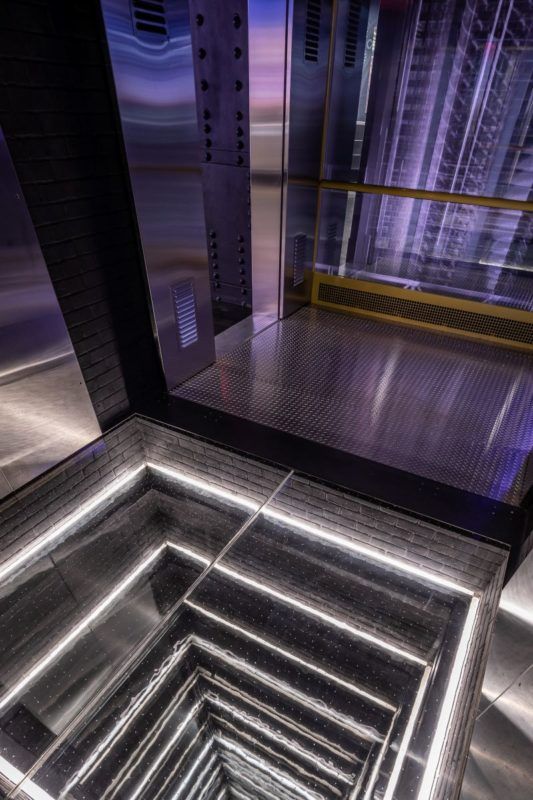
Photo by Evan Joseph courtesy Empire State Building
Callum Cooper of Squint/Opera, the creative digital studio that handled the exhibit’s sound design, described how the sound engineers were given an inside look into the workings of the great building so that they could recreate its functions as accurately as possible. For instance, “To design to the media in here, we had our team ride up on top of an elevator to understand what it looks like. That’s probably the most extreme example…we were standing on top of one of the actual elevators going from the second floor to the 80th floor.”
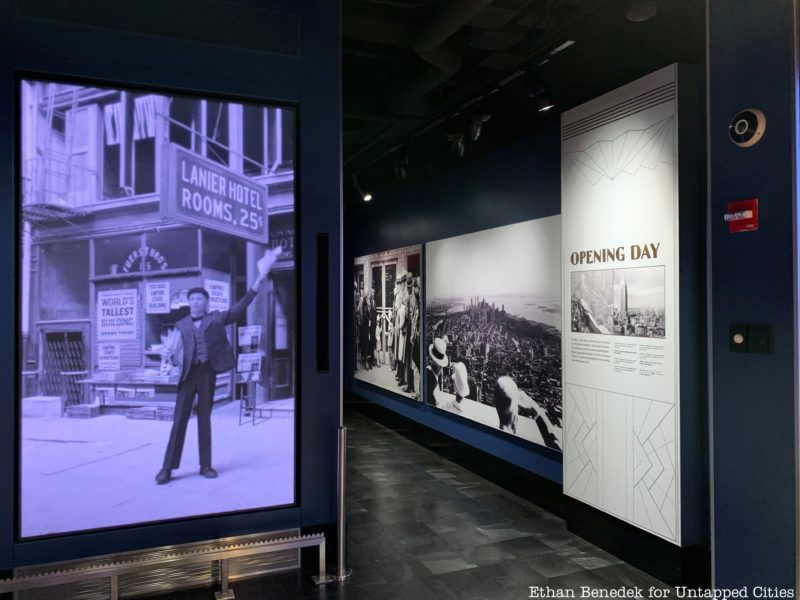
Another part of the exhibit focuses on the giant body of movies and media in which the Empire State Building has starred. One room is surrounded by windows showing what the view from the top observatory would have looked like in the 30’s, while a moving King Kong appears to peer back at you from his perch outside. Cooper said of the process, “They took us out onto these ledges on [floors] 87 and 88 to do filming for construction. The constructed area is a photograph of the city that’s then been converted back to the 1930’s…by photoshopping the background.”
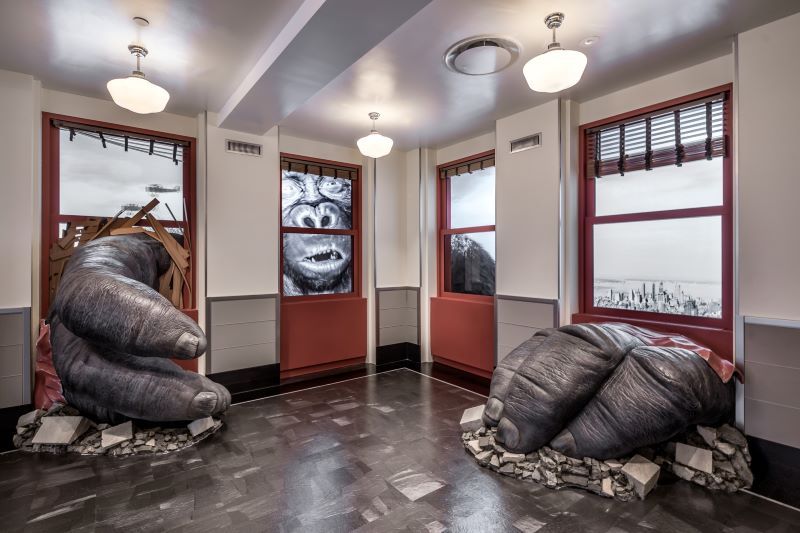
Photo by Evan Joseph courtesy Empire State Building
The next room plays clips of the Empire State Building as seen in film and TV across an entire wall of fragmented screens, accompanied by music that creates an overall breathtaking effect. Instead of taking the music from an outside source, it was composed specially for the museum and recorded by a 60-piece orchestra. The composer of the piece said, “It’s such a mashup of different iconic clips, and its an iconic building, so capturing the energy of seeing this building in a Hollywood movie. And also, that could sound a lot of different ways depending on the mood. The theme of the piece is seeing the building from a distance and then slowly going in and going to the top.”
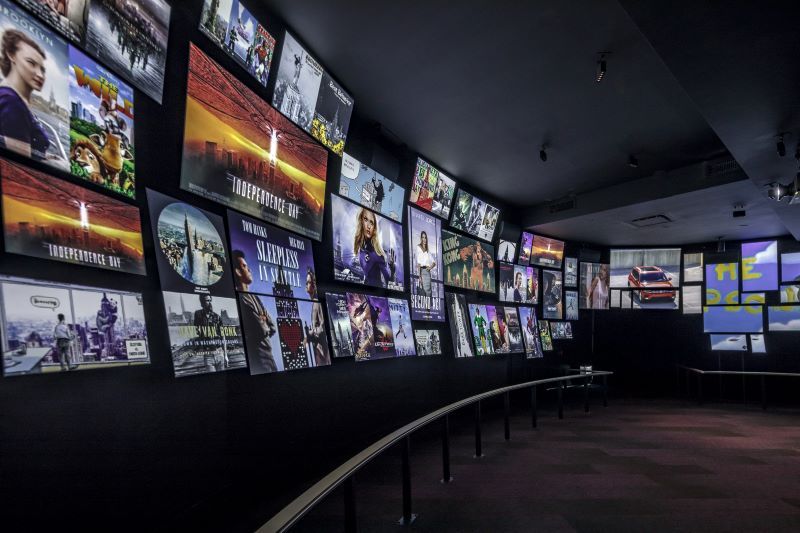
Photo by Evan Joseph courtesy Empire State Building
The last part of the exhibit is a gallery of photos of a wide variety of celebrities and well known figures taken at the Empire State Observatory, ranging from J.K. Rowling, to Miss Piggy, to the K-pop band BTS. Beneville mentioned that the pictures were selected to include figures from a wide variety of places and backgrounds to emphasize that the Empire State Building welcomes all visitors to New York. Several objects relating to New York culture, like a pair of shoes used by a Rockette in the annual Radio City Christmas Special, are also on display. Beneville said they were taken from storage in the basement of the building.


At the end of the day, the creation of the museum was about offering an additional element to a visitor’s personal experience of the iconic building. Hennes said, “Coming to the Empire State Building is not just a once in a lifetime thing. Many people do it a couple times in their lives. So it’s about designing something here that if you were 7 years old the first time you saw it, something would just wake up inside of you. And then if 30, 40 years later you came here with your kids, you would just feel the same way.”
Next, check out the Top 10 Secrets of the Empire State Building.
Subscribe to our newsletter